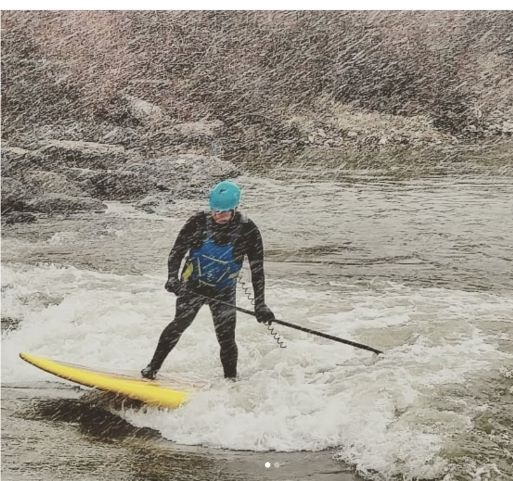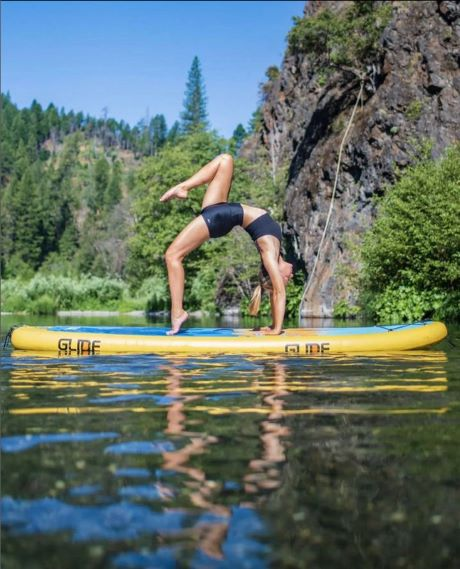
What Is the Difference Between a SUP and a Paddle Board?
SUPs and paddle boards are often considered the same—but not quite. Learn how stand-up paddle boards differ from traditional paddle boards, which is best for your needs, and what to look for as a beginner.
While “SUP” and “paddle board” are often used interchangeably, the distinction comes down to purpose and design.
A SUP (stand up paddle board) is meant for standing and paddling with a single-bladed paddle, while the broader term paddle board can include prone or kneeling boards used for racing or rescue.
For most recreational paddlers, though, the two mean the same thing—a stable, versatile board for exploring lakes, rivers, and oceans.
When in doubt, look for an all-around SUP with good width, volume, and portability to start your paddling adventures with confidence.
Table of contents
 Types of SUP Boards 1. All-Around SUPs 2. Touring SUPs 3. Yoga or Fitness SUPs 4. Fishing SUPs 5. Inflatable vs. Hard Boards How to Choose the Right Board for You What to Remember Final Thoughts
Types of SUP Boards 1. All-Around SUPs 2. Touring SUPs 3. Yoga or Fitness SUPs 4. Fishing SUPs 5. Inflatable vs. Hard Boards How to Choose the Right Board for You What to Remember Final Thoughts
Introduction
If you’ve ever shopped for a paddle board or read about the sport online, you’ve likely seen the terms SUP and paddle board used interchangeably. But are they actually the same thing? The short answer: yes—mostly. While all SUPs are paddle boards, not every paddle board is necessarily a SUP.
Let’s break down the difference, explore the main types of paddle boards, and help you choose the right one for your needs.

Understanding the Terms
SUP (Stand Up Paddle Board)
SUP stands for Stand Up Paddleboard. It’s a watercraft designed for standing while paddling using a single-bladed paddle. The sport—known as stand up paddleboarding—combines aspects of surfing and kayaking, providing an excellent full-body workout and a fun way to explore lakes, rivers, and coastal waters.
A SUP typically has:
-
A large, stable deck for standing.
-
A center fin or multiple fins for tracking.
-
A leash attachment and deck pad for grip.
-
A single-bladed paddle for propulsion.
Paddle Board
“Paddle board” is a broader term that can refer to any board propelled by a paddle—this includes SUPs, prone paddle boards, and even kneeling or rescue boards used in lifeguard training or surf rescue.
So while a SUP is a type of paddle board, not every paddle board is designed for stand-up paddling.
Key Differences Between SUPs and Traditional Paddle Boards
Feature
SUP (Stand Up Paddle Board)
Traditional Paddle Board
| Paddling Position | Standing with a single-bladed paddle | Kneeling or lying prone, paddled by hand or short paddle |
| Primary Use | Recreation, fitness, yoga, fishing, touring | Racing, lifeguard training, ocean rescue |
| Board Design | Wider and thicker for balance | Longer and narrower for speed |
| Accessories | Paddle, leash, fins, deck pad | Usually none beyond basic grip |
| User Skill Level | Beginner to advanced | Intermediate to professional athletes |
Types of SUP Boards
While “SUP” refers to standing paddle boards in general, there are several distinct categories tailored to different uses:
1. All-Around SUPs
Ideal for beginners and recreational paddlers. These boards are stable, versatile, and suitable for lakes, calm rivers, and coastal cruising. The Glide Retro or Glide O2 Retro are excellent examples.
2. Touring SUPs
Designed for long-distance paddling. These boards are longer and narrower, offering better glide and tracking on open water. Great for adventure seekers and fitness paddlers.
3. Yoga or Fitness SUPs
Extra-wide with soft, full-deck pads for yoga, Pilates, or general fitness routines. They provide maximum stability for stationary workouts.
4. Fishing SUPs
Outfitted with gear mounts, rod holders, and high weight capacity for anglers who want to fish while standing. Glide’s O2 Angler is a standout in this category.
5. Inflatable vs. Hard Boards
Inflatable SUPs are convenient for travel and storage, while hard boards (epoxy or composite) offer slightly more performance for advanced users. For most paddlers, modern inflatables like those built with AeroMatrix™ woven drop stitch provide a near-identical feel to rigid boards.
How to Choose the Right Board for You
When deciding between SUPs or other paddle boards, consider these factors:
-
Purpose: Recreation, touring, yoga, or fishing?
-
Stability Needs: Beginners should prioritize width (32–34”).
-
Portability: Inflatable boards are perfect for travel or limited storage.
-
Durability: Fused PVC rails like Glide’s ThermoFuse™ technology extend lifespan and stiffness.
-
Weight Capacity: Always check your combined paddler + gear weight to ensure stability.

What to Remember
- Terminology: SUP = stand up paddle board (designed for standing with a single-blade paddle). “Paddle board” is broader and can also mean prone/kneeling boards used for rescue or racing.
- Design & Use: SUPs are wider/thicker with deck pads, fins, and leashes for stability and standing; traditional paddle boards (prone) are longer/narrower for speed and are paddled by hand or short paddle.
-
Buyer tip: If you plan to stand and paddle recreationally, you’re looking for a SUP—start with 10’6″–11′ length, 32–34″ width, and pick inflatable if you need easy transport/storage.
Final Thoughts
While SUP and paddle board are often used synonymously, the difference lies in the style of paddling and purpose. SUP specifically means stand up paddle board, whereas “paddle board” can include several variations—some designed for lying or kneeling rather than standing.
For most recreational users, though, the terms mean the same thing: a fun, stable board for exploring the water while standing and paddling. Whether you choose a hard board or an inflatable, SUPing is one of the most accessible and rewarding water sports out there.
FAQs
Is there a difference between a SUP and a paddle board?
Yes, technically—SUPs are designed for standing and paddling, while “paddle board” can refer to multiple board styles, including prone boards used for rescue or racing.
Are SUPs good for beginners?
Absolutely. All-around SUPs are stable, forgiving, and perfect for learning balance, paddling technique, and water safety.
Are inflatable paddle boards as good as solid ones?
Modern inflatables are extremely durable and rigid, especially those built with woven drop-stitch cores. For most paddlers, performance differences are minimal.
Can I surf with a SUP?
Yes! Surf-style SUPs are shorter and more maneuverable, allowing you to catch small to medium waves.
What size SUP should I get?
A 10'6" to 11' board around 32–34" wide works best for beginners seeking balance and versatility.





